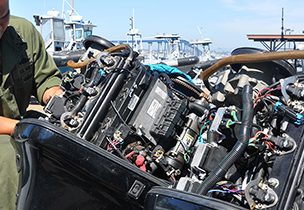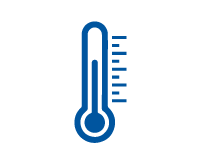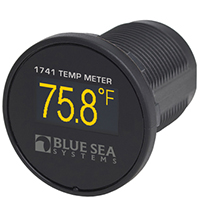Top Reasons Boats Fail, Overheating
Posted by Pacer on 4th Feb 2019

Top Reasons Boats Fail, Overheating

When your engine is overheating, it’s usually a sign that water is not flowing in the cooling loop. Water is a crucial part in keeping your engine from overheating. In case you didn’t know, I/O motors use water from the surrounding area to keep cool. Basically, when your motor is in the water and running there are ports where the motor draws water in. The water then passes through special channels in the engine absorbing heat along the way. After absorbing the heat, the water continues through the cooling loop. Then the water is expelled, and the heat with it. When you really think about it, the process is fascinating. Your boat engine uses the environment in order to function correctly. A motor is built in such a way as to use the least amount of space possible so the distance between moving parts ends up being minuscule. As the engine heats up, parts begin to expand. The water in the cooling loop controls this expansion by controlling the level of heat. When the water can’t flow properly, the heat will build up quickly and part will begin to expand more than they should. Parts that are moving very fast. Parts that will make contact with other parts moving very fast. I think you can see why this can be very bad. In reality, this is catastrophic. In just a few minutes under these conditions, a boat engine can essentially destroy itself. That is why overheating is a serious concern that must be addressed immediately. Shut the engine off and raise it out of the water. Check the intake ports for clogs or debris and remove what you can. If there is no blockage that you can find, check your hoses and hose clamps for signs of cracking or bursting. If you cannot find the issue at this point, let your engine cool if possible and slowly return to the dock. It's time for a repair shop visit.
Prevention

The first step is to find out where the blockage is occurring. Often times, seaweed, and trash can block the intake port preventing water from entering. Once you find the problem, simply remove the obstruction. It’s a good idea to keep a thin rod or soft wire to dig clogs out. Once, a boat we were using was overheating, so we stopped to inspect what the issue was. Turns out dirt daubers had built a nest in the intake port. The point is, you never know, so check before you’re on the water. Make a point to inspect your hoses and clamps before putting your boat in the water, especially after it has sat up for an extended period of time. This simple routine will prevent you from having to deal with this issue on the water or get caught in a dangerous situation.
Tools you'll need:
- Screwdrivers
- A thin rod of wire
A simple tool can have many purposes:
So you found the blockage but have no way to get it out of the narrow channel. Having a tool similar to the Deutsch contact removal tool would be extremely useful in this situation. The flat screwdriver side could be used to dig out small pieces of trash or build up. If you look the other side, you'll see it has a slight hook-like feature. This is great for getting plastic or plant material that has found its way into the channel. Gently insert the hook-end and twist as you make contact. Once you're sure you have a good hold, simply pull back on the tool without applying too much force. The last thing you want to do is break the obstruction into smaller pieces. Keep this tool on board is a safe bet that will help you out in the long run.
A temperature monitor is essential:
An easy way to continually be aware of your motors heat level is by using an OLED temperature monitor. This reliable monitor keeps track of essential electrical system parameters and displays them on a waterproof, bright, easy to read OLED screen. Why worry about your boat overheating when you could be enjoying your time on the water. Let the OLED temperature monitor do all the hard work for you. One of the best parts about this monitor is its compact size. With an outside diameter of just over 1.5-inches, it is easy to install and it takes up little space. Seriously, you can install this meter in a common 1.125-inch hole. If you're interested in this kind of convenience, we also offer ammeters and voltmeters in the same style.


